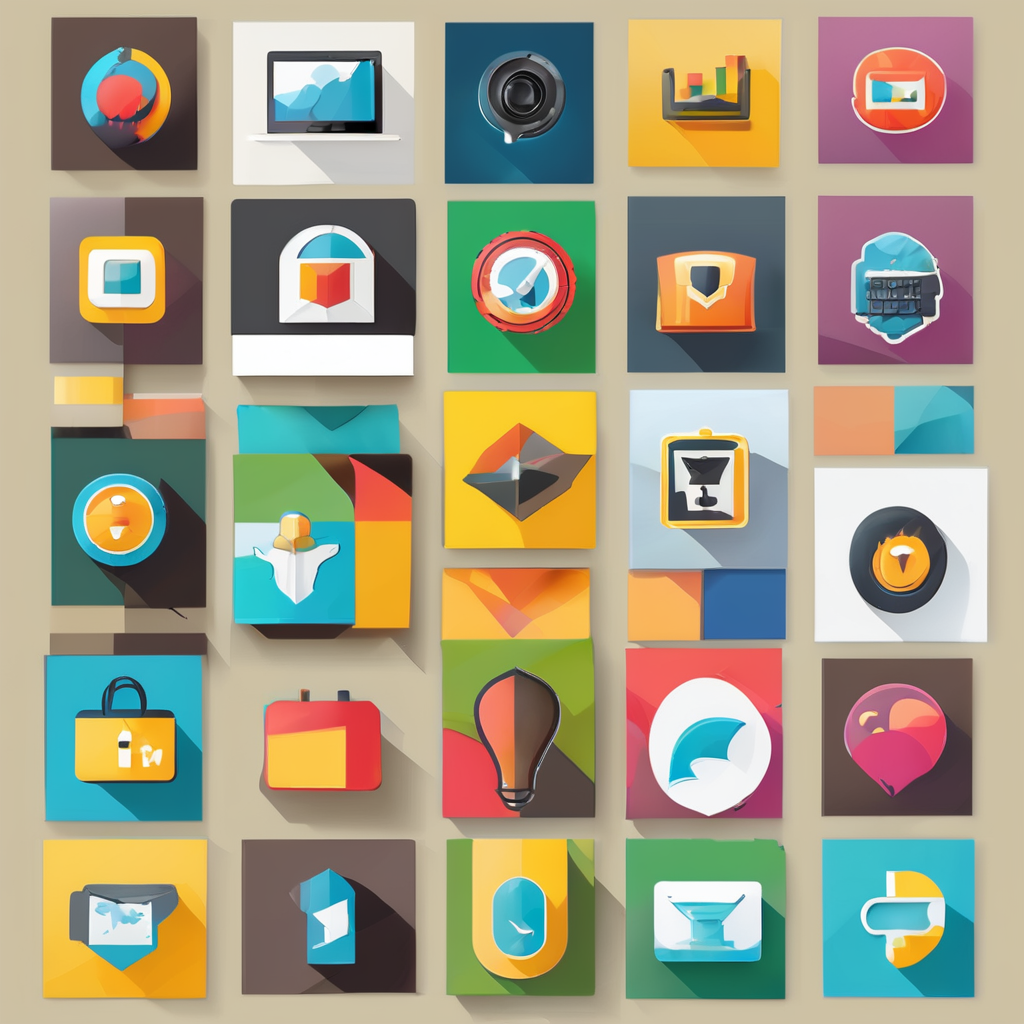Revolutionizing UK Property Management with Digital Twins: A Game-Changer for Real Estate Companies to Digital Twins in Real Estate
In the ever-evolving UK property market, a new technology is transforming the way properties are marketed, managed, and maintained: digital twins. These virtual replicas of physical properties are not just 3D models or virtual tours; they are dynamic, data-rich entities that update in real-time, offering unparalleled insights into every aspect of a property’s operation and performance.
What are Digital Twins?
A digital twin is a virtual model of a physical building, enhanced with real-time data from various sources such as sensors, building management systems, and other IoT devices. This technology combines detailed physical and functional characteristics with live data, creating a living digital counterpart of the property. Here’s a breakdown of what makes a digital twin so powerful:
Also to see : Unlocking Blockchain: UK Startups’ Ultimate Guide to Enhancing Business Transparency
- Static Twin: A basic static visualization of the property.
- Detailed Twin: Linked with additional data such as architectural plans and building specifications.
- As-Built Twin: Reflects the actual implementation of the building.
- Sensored Twin: Updated with real-time data from IoT sensors.
- Responsive Twin: Reflects responsive actions in the physical twin.
- Adaptive Twin: Simulates scenarios semi-automatically.
- Intelligent Twin: Makes decisions fully autonomously[5].
Impact on Property Marketing
Digital twins have revolutionized the property marketing landscape in several key ways:
Enhanced Buyer Experience
Estate agents and property professionals can now showcase properties in ways that were previously impossible. Potential buyers or tenants can explore every aspect of a property remotely, from examining room layouts and testing different furniture arrangements to understanding complex building systems and environmental performance. This enhanced level of interaction has proven particularly valuable in the UK’s competitive property market, where buyers increasingly demand detailed information before committing to physical viewings[1].
Have you seen this : Revolutionizing UK Retail: Enhancing Shopper Experience with Cutting-Edge Visual Search Technology
Streamlined Viewing Process
Digital twins allow potential buyers to conduct thorough initial assessments remotely, significantly reducing the time spent on unsuitable properties and streamlining the entire viewing process. For example, Matterport’s digital twin technology has been used to create detailed virtual tours of properties, allowing buyers to explore spaces as if they were there in person[2].
Transparency in Due Diligence
The technology has transformed the due diligence process by providing comprehensive building information, maintenance histories, and performance data through the digital twin interface. This level of transparency is particularly valuable for commercial properties, where buyers and their advisors can access detailed insights without the need for multiple site visits. International investors, in particular, benefit from this capability, as they can conduct thorough property assessments remotely[1].
Transforming Property Management
Beyond the sales process, digital twins are revolutionizing how properties are managed and maintained.
Proactive Maintenance
Digital twins enable proactive maintenance scheduling by predicting potential issues before they occur. Property managers can monitor building systems in real-time, making data-driven decisions about property improvements and modifications. For instance, a digital twin can identify inefficiencies in energy consumption and suggest optimizations, leading to better energy management and reduced operational costs[5].
Efficient Space Utilization
Digital twins can track real-time occupancy levels and usage patterns, helping to optimize floorplans and reallocate space as needed. This is particularly beneficial for commercial properties where maximizing space efficiency is crucial.
Remote Inspections
Building managers can remotely access a digital twin to monitor building systems and track performance from anywhere, reducing the need for physical site visits and enhancing overall management efficiency.
Practical Applications and Benefits
Here are some practical applications and benefits of digital twins in the real estate industry:
- Energy Management: Digital twins can identify energy inefficiencies and suggest optimizations.
- Example: A commercial building in London used a digital twin to reduce its energy consumption by 20% by identifying and addressing inefficiencies in its HVAC system.
- Predictive Maintenance: Digital twins can predict when equipment is likely to fail, enabling proactive maintenance.
- Example: A property management company in Manchester used a digital twin to predict the failure of a critical elevator, allowing for timely maintenance and avoiding costly downtime.
- Space Utilization: Digital twins can track real-time occupancy levels and usage patterns to optimize floorplans.
- Example: A co-working space in Bristol used a digital twin to optimize its floorplan, resulting in a 15% increase in usable space.
- Remote Inspections: Building managers can remotely monitor building systems.
- Example: A property manager in London used a digital twin to conduct remote inspections of a building in another city, saving time and travel costs.
Integration with Other Technologies
Digital twins are becoming increasingly sophisticated with the integration of other cutting-edge technologies.
Artificial Intelligence and Machine Learning
The integration of artificial intelligence (AI) and machine learning (ML) is enabling more predictive capabilities. For instance, AI can analyze data from the digital twin to predict maintenance needs, optimize energy consumption, and even simulate various scenarios to find the best solutions[1].
Internet of Things (IoT)
The use of IoT devices is crucial for updating digital twins with real-time data. This integration allows for continuous monitoring and optimization of building systems, enhancing overall property management[5].
Challenges and Considerations
While the benefits of digital twins are numerous, there are also several challenges and considerations to keep in mind:
- Data Protection and Privacy: Digital twins require careful attention to data protection and privacy considerations, particularly in light of GDPR requirements. Establishing clear protocols for data collection, storage, and access is essential to ensure compliance with all relevant regulations[1].
- Initial Investment: Creating and maintaining an effective digital twin requires significant investment in both technology and expertise. The process involves detailed property scanning, system integration, and ongoing data collection and updates[1].
- Complexity in Large-Scale Projects: Large-scale projects, such as the creation of a digital twin for a 400,000 square foot convention center, present unique challenges. These include managing large open spaces, overcoming lighting and connectivity issues, and ensuring continuity when scanning different sections of the building over time[4].
Future of Digital Twins in Real Estate
As technology continues to evolve, digital twins are becoming increasingly sophisticated and accessible.
Growing Adoption
About 15% of real estate firms are already using digital twin technology, with many more in the early stages of adoption or piloting the technology. This trend is expected to continue as the benefits of digital twins become more widely recognized[3].
Integration with Proptech
The integration of digital twins with other proptech solutions is likely to revolutionize how properties are designed, built, marketed, and managed. For example, combining digital twins with construction software can enhance the building lifecycle from planning to operations[5].
Sustainability Focus
The growing focus on sustainability in the UK property market has made digital twins particularly valuable for demonstrating and optimizing environmental performance. Digital twins can track environmental metrics such as energy consumption, water usage, and carbon emissions, helping properties achieve green building certifications[5].
Digital twins represent a significant advancement in property marketing and management, offering unprecedented capabilities for property presentation, analysis, and management. As the UK property market continues to evolve, embracing digital twin technology will be crucial for real estate companies looking to stay ahead.
In the words of RJ Pittman, Chairman and CEO of Matterport, “2024 was more than a year of growth—it was a testament to the power of innovation and the increasing demand for Matterport’s digital twin technology.” As we look to the future, it’s clear that digital twins will play an increasingly central role in the real estate industry, transforming how properties are marketed, managed, and maintained.
Practical Advice for Estate Companies
For real estate companies considering the adoption of digital twin technology, here are some practical tips:
- Start Small: Begin with a pilot project to understand the technology and its benefits before scaling up.
- Invest in Training: Ensure that your team is well-trained in using and maintaining digital twins.
- Focus on Data Quality: Ensure that the data collected is accurate and up-to-date to maximize the benefits of the digital twin.
- Consider Integration: Look into integrating digital twins with other proptech solutions to enhance their utility.
- Address Privacy Concerns: Establish clear protocols for data protection and privacy to comply with regulations.
By embracing digital twin technology, real estate companies can enhance their marketing efforts, improve property management, and make more informed decision-making processes, ultimately leading to greater client satisfaction and operational efficiency.
Table: Benefits of Digital Twins in Real Estate
| Benefit | Description |
|---|---|
| Enhanced Buyer Experience | Detailed virtual tours and remote exploration of properties. |
| Streamlined Viewing Process | Reduces time spent on unsuitable properties and streamlines viewings. |
| Transparency in Due Diligence | Provides comprehensive building information and performance data. |
| Proactive Maintenance | Predicts potential issues and enables proactive maintenance. |
| Efficient Space Utilization | Tracks real-time occupancy levels and optimizes floorplans. |
| Remote Inspections | Allows building managers to monitor systems remotely. |
| Energy Management | Identifies inefficiencies and suggests optimizations. |
| Predictive Analytics | Predicts equipment failures and optimizes maintenance schedules. |
| Sustainability Tracking | Monitors environmental metrics for green building certifications. |
List: Key Use Cases for Digital Twins in Real Estate
- Energy Management:
- Identify energy inefficiencies
- Suggest optimizations
- Monitor real-time energy consumption
- Predictive Maintenance:
- Predict equipment failures
- Schedule proactive maintenance
- Reduce downtime
- Space Utilization:
- Track real-time occupancy levels
- Optimize floorplans
- Realocate space as needed
- Remote Inspections:
- Monitor building systems remotely
- Track performance from anywhere
- Reduce need for physical site visits
- Green Building Certification:
- Track environmental performance
- Monitor energy consumption, water usage, and carbon emissions
- Achieve green building certifications
By understanding and leveraging these benefits and use cases, real estate companies can position themselves for success in an increasingly digital property market.











